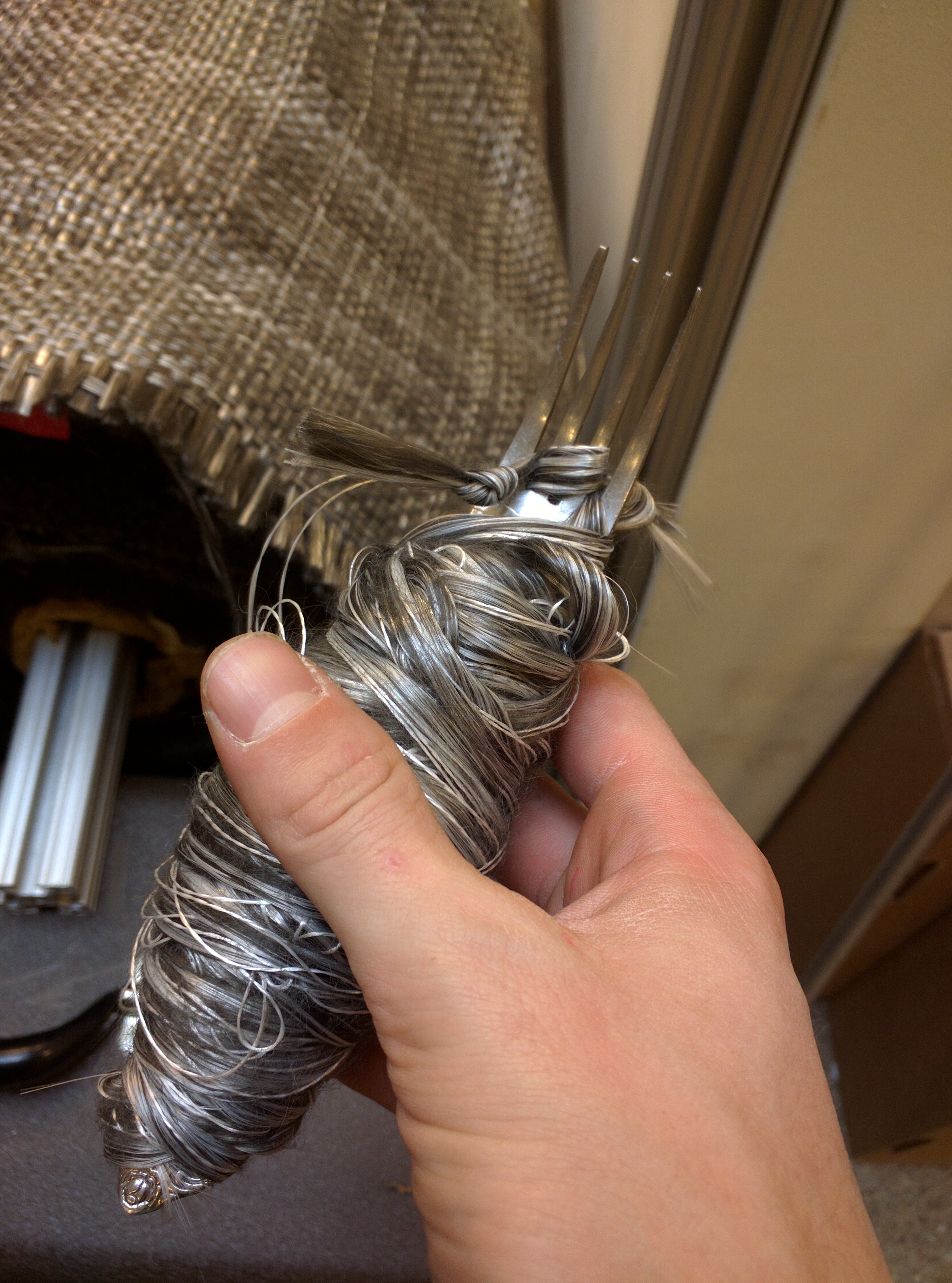I started with a thin aluminum rod that would serve as the inner diameter for my tube. I applied a few thin layers of molding wax, so I would hopefully be able to easily get the tube off of the mold later.

For my first test I wrapped a single layer under tension down the tube

After wrapping a single layer I kept tension on the threads by hanging a clamp off of them, and wrapped the pole gently with a strip of silicone rubber. If you wrap it too tightly the rubber will fail when you start to heat it.

After letting it cool you can see that the plastic has turned black and hard (it's a little blurry, and I might not have heated this layer long enough).

I then wrapped the thread back in the other direction to add a second layer to the composite. When wrapping the silicone rubber I carefully wrapped it so that it didn't overlap with itself - this made for a nicer finish where the plastic deformed less at the boundaries.

The first piece came off really easily when I was finished. I pulled it off while it was still a little warm, but it would also probably be fine to wait for it to cool. I then tried a second time - except this time I wrapped three layers at once, and the middle layer was strands that ran back and forth vertically up and down the length of the shaft. This should make the final shape a lot stronger.

The two finished shapes. The finish when doing 3-layers at once is not as nice. The fibers move around a lot more and there is likely less compaction overall. However, the part with fibers running up and down the length of the shaft is quite strong (obviously), and would be even stronger if I were to do this one layer at a time. The pole that is just a spiral wrap definitly has some weak places where it would just crack with enough force.

You can see that going one layer at a time did a much better inner finish as well. I might not have got the very inside of the plastic hot enough on the 3-ply wrap. The ends are also much more messy. It's still much stronger! Having the fibers running in the right direction for the part geometery is obviously very important.











